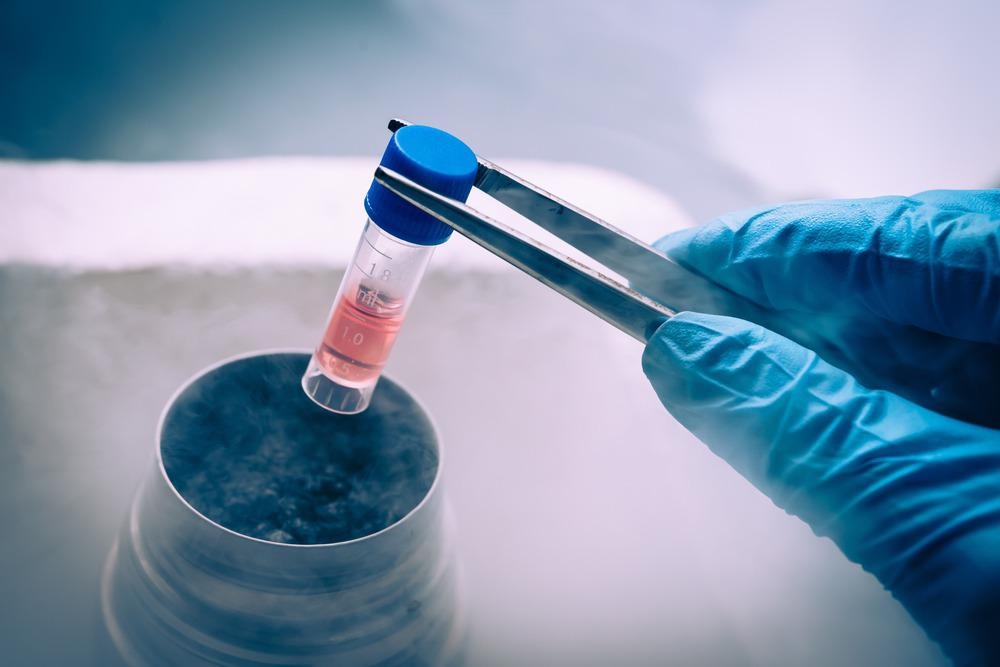Potential breakthroughs within cancer theranostics may have guidance from an emerging field that aims to utilize nanotechnology for cancer diagnosis and therapeutic applications, known as nanotheranostics.

Image Credit: Elena Pavlovich/Shutterstock.com
The clinical translation of nanotechnology to cancer treatment could be revolutionary for progressing personalized or precision medicine. It could also help to ensure that patient treatment is guided by early diagnosis, as well as targeted therapy that prioritizes the overall health of people with cancer and prevents systemic toxicity.
This article will explore the clinical translation of 2D nanomaterials for the advanced application of nanotheranostics in different types of cancer treatment and diagnosis.
What Is Nanotheranostics?
The term ‘theranostics’ was first introduced by John Funkhouser, the president and CEO of PharmaNetics in 2002, and aims to integrate diagnostics and therapy. The emergence of nanotechnology led theranostics to encompass this innovative field, resulting in the birth of nanotheranostics.
The field of nanotheranostics includes treatment options such as non-invasive imaging, targeting, and treating areas of concern while reducing negative side effects to surrounding healthy tissue. The benefit of this approach enables the progression of personalized or precision medicine to guide patient treatment and improve prognoses through early diagnostic tests.
The targeted approach offered by nanotheranostics provides a comprehensive insight into a patient’s tumor. Nanotheranostics enables the design of nanoscale carriers within the scale of 1-100 nm in size for drug delivery applications, transporting treatment to specific tumor areas. This precision treatment ensures healthy cells and tissues are not harmed by the drug's toxicity, which is usually a consequence of systemic treatments from conventional chemotherapy drugs.
Systemic toxicity can result in secondary illnesses and disorders, such as organ failure. Additionally, this application of nanotechnology also enables real-time monitoring of drug release as well as the subsequent journey and distribution of the drug within the patient’s body.
Clinical Applications of 2D Nanomaterials
A range of 2D nanomaterials has gained traction within cancer research due to their atomically thin nanostructure and physiochemical characteristics.
These materials can include MXenes, graphene oxide, manganese dioxide, and palladium, which benefit from a high surface area to volume ratio, electron confinement, ultrathin layers, and high mechanical flexibility.
MXenes were first discovered in 2011, and comprise a family of transition metal carbides, carbonitrides, and nitrides that have graphene-like structures. MXenes can be utilized as potential drug delivery nanocarriers for certain types of cancer treatment, such as cancer hyperthermia. Here, heat is used to damage and kill cancer cells.
Using MXenes in this approach includes external irradiation that would increase the temperature around the nanomaterial through an infrared laser at a wavelength of 808 nm. With cancer cells being more sensitive to heat than normal healthy cells, this cancer nanotheranostic approach may have a promising clinical translation.
Research into graphene oxide (GO) nanosheets for cancer nanotheranostics has also gained progression. Existing literature describes the development of a novel drug delivery system that targets the epidermal growth factor receptor (EGFR). EGFR is a tyrosine kinase receptor involved in creating genomic alterations when mutated through overexpression, leading to cancers from gliomas within the brain. It is also associated with prostate and breast cancer.
The introduction of a novel drug delivery system involved PEGylated nanographene oxide that is loaded with an anticancer drug and anti-EGFR antibodies. This research resulted in the targeting of cells in an environment that is dependent on pH levels, as well as the downregulation of EGFR that ultimately caused apoptosis, or cell death.
Other applications of nanotechnology within cancer theranostics include manganese oxide nanosheets that could be used for imaging and pH-sensitive drug release for the targeted release of anticancer drugs that would accumulate within cancer cells.
Palladium has also been integrated into studies within cancer research due to its strong UV-vis absorption. For instance, palladium has been used within a nanocomposite that displays theranostic effects through photothermal conversion.
Translational Significance of Nanotheranostics
The clinical translation of nanotheranostics for cancer treatment aims to deliver significant breakthroughs, not only for this field but also for nanomedicine, which aims to utilize nanoscale materials like 2D materials for clinical applications. With more research, mortality rates of people with cancer, progressing from a lack of effective treatment, as well as overall patient care can be addressed for a more optimistic future.
While cancer theranostics is a high priority for nanotheranostics, its use is expected to extend to a variety of other diseases. In doing so, personalized and targeted treatment could be designed, helping to enhance therapeutic and diagnostic strategies within clinical settings.
References and Further Reading
Medlineplus.gov. (2022) Hyperthermia for treating cancer: MedlinePlus Medical Encyclopedia. [online]
Raja, I., Kang, M., Kim, K., Jung, Y. and Han, D., (2020) Two-Dimensional Theranostic Nanomaterials in Cancer Treatment: State of the Art and Perspectives. Cancers, 12(6), p.1657. Available at: https://doi.org/10.3390/cancers12061657
Wong, X., Sena-Torralba, A., Álvarez-Diduk, R., Muthoosamy, K. and Merkoçi, A., (2020) Nanomaterials for Nanotheranostics: Tuning Their Properties According to Disease Needs. ACS Nano, 14(3), pp.2585-2627. Available at: https://doi.org/10.1021/acsnano.9b08133
Yang, H., et al (2013) EGRF conjugated PEGylated nanographene oxide for targeted chemotherapy and photothermal therapy. Biomaterials, 34(29), pp.7204-7214. Available at: https://doi.org/10.1016/j.biomaterials.2013.06.007
Disclaimer: The views expressed here are those of the author expressed in their private capacity and do not necessarily represent the views of AZoM.com Limited T/A AZoNetwork the owner and operator of this website. This disclaimer forms part of the Terms and conditions of use of this website.